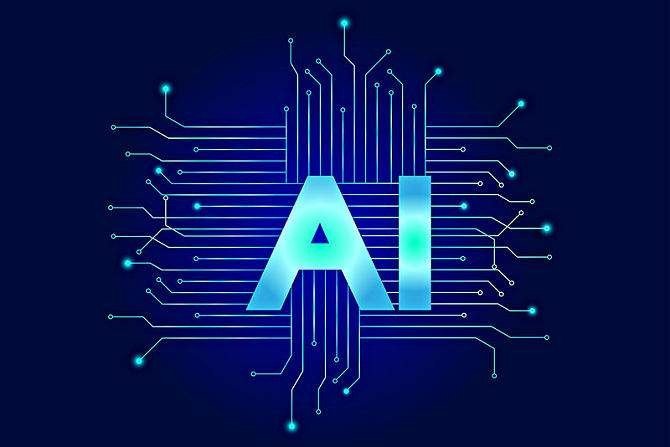Bitcoin is a word that has become almost ubiquitous in the world of finance, technology, and even popular culture. It’s a digital asset, a cryptocurrency, and one of the most disruptive innovations of the 21st century. But what exactly is Bitcoin? How does it work, and why has it garnered so much attention from tech enthusiasts, investors, regulators, and everyday users?
In this exploration, we’ll go deep into the history, mechanics, and the broad implications of Bitcoin, from its mysterious beginnings to its potential future as a revolutionary force in global finance.
The Origins of Bitcoin: A Digital Enigma
Bitcoin’s story begins in 2008, in the wake of the global financial crisis. The system that had long governed financial markets was in turmoil. Banks were failing, trust in traditional financial institutions was at an all-time low, and the average person was starting to question the integrity of centralized financial systems.
Out of this environment of uncertainty emerged a whitepaper that would change the world: “Bitcoin: A Peer-to-Peer Electronic Cash System,” written by the pseudonymous Satoshi Nakamoto. Nakamoto, whose identity remains a mystery to this day, proposed a decentralized digital currency that would not rely on a central authority such as a government or a bank to validate transactions. It would be peer-to-peer, meaning users could send and receive money directly without an intermediary.
Nakamoto’s vision was to create a currency that operated on the principles of freedom, privacy, and autonomy. It was designed to be immune to inflation and manipulation because of its limited supply — only 21 million bitcoins would ever be created. This scarcity is key to its appeal as a store of value and an alternative to traditional fiat currencies.
On January 3, 2009, Nakamoto mined the first block of Bitcoin, known as the genesis block or block 0, and in doing so, launched the Bitcoin network. This marked the birth of what we now know as the world’s first cryptocurrency.
The Anatomy of Bitcoin: How It Works
At the heart of Bitcoin lies a revolutionary technology: blockchain. A blockchain is a decentralized ledger that records every transaction made with Bitcoin. It is not stored in any single location; instead, copies of the blockchain are distributed across thousands of computers, or nodes, around the world. This means that Bitcoin is not controlled by any central authority or institution, but rather, by the collective agreement of the network’s participants.
Here’s a simplified breakdown of how Bitcoin works:
1. Decentralized Network
Bitcoin operates on a peer-to-peer network of computers. When someone sends Bitcoin, they are broadcasting a transaction to the entire network. The computers (or nodes) then validate the transaction to ensure it’s legitimate.
2. Transaction Validation
Before a Bitcoin transaction is confirmed, it needs to be validated by the network. This validation process is done through a process called mining. Miners use powerful computers to solve complex mathematical problems that verify the authenticity of the transaction. Once the problem is solved, the miner adds the transaction to a block — a group of verified transactions — and links it to the blockchain.
3. Proof of Work
To add a block to the blockchain, miners must perform a task known as proof of work. This involves solving a cryptographic puzzle, which requires significant computational power. The first miner to solve the puzzle is rewarded with new bitcoins and the right to add the block to the blockchain.
4. Immutable Ledger
Once a transaction is recorded on the blockchain, it is essentially permanent. Each block in the chain is linked to the previous one, making it incredibly difficult to alter past transactions. This immutability is one of the key features that makes Bitcoin so secure.
5. Mining and Supply Limit
Bitcoin’s supply is limited to 21 million coins, and the process of releasing new bitcoins into circulation is designed to slow down over time. Initially, miners were rewarded with 50 bitcoins for solving a block, but this reward is halved approximately every four years in an event known as the halving. Today, the reward is 6.25 bitcoins per block. The halving process ensures that Bitcoin’s supply will never exceed 21 million coins, making it a deflationary asset.
The Appeal of Bitcoin: Why People Love It
1. Decentralization and Freedom
Bitcoin is a decentralized currency, which means it is not controlled by any central authority, such as a government or a central bank. This is appealing to individuals who want to have more control over their financial lives, free from the manipulation or inflationary policies often imposed by traditional institutions. Bitcoin’s decentralized nature makes it an ideal tool for individuals in countries with unstable currencies or oppressive regimes, where access to financial services is limited.
2. Security and Transparency
The blockchain that underpins Bitcoin transactions is designed to be highly secure. Once a transaction is recorded, it is almost impossible to reverse or alter it. This makes Bitcoin a secure form of payment, especially compared to traditional banking systems, where chargebacks and fraud are common.
Furthermore, the blockchain is publicly accessible, meaning anyone can verify Bitcoin transactions. This transparency is a stark contrast to the opaque practices of many financial institutions.
3. Limited Supply: Digital Gold
One of Bitcoin’s most compelling features is its scarcity. With only 21 million bitcoins ever to be mined, Bitcoin is often referred to as “digital gold.” Unlike fiat currencies, which can be printed at will by central banks, Bitcoin’s supply is fixed. This scarcity has driven its adoption as a store of value and a hedge against inflation.
Over the years, Bitcoin has gained the reputation of being a digital asset that can potentially preserve wealth in times of economic uncertainty. Many investors see it as a safe haven asset, much like gold, during times of inflation or currency devaluation.
4. Lower Transaction Costs
Traditional financial systems often involve high fees, especially for international money transfers. Bitcoin, on the other hand, allows for cheaper and faster transactions, particularly when sending money across borders. While the cost of Bitcoin transactions can fluctuate depending on network congestion, it is often far less expensive than traditional financial systems.
5. Privacy and Pseudonymity
Bitcoin transactions, while transparent, are also pseudonymous. This means that while all transactions are publicly recorded on the blockchain, the identities of the people involved are not. Instead of using real names, users are identified by their Bitcoin addresses. This provides a level of privacy that is not always possible with traditional payment methods.
The Challenges of Bitcoin
Despite its many advantages, Bitcoin faces several challenges that prevent it from achieving mainstream adoption. These challenges range from technical issues to regulatory concerns.
1. Scalability
As more people use Bitcoin, the network can become congested, leading to slower transaction times and higher fees. Bitcoin’s scalability problem is a result of the fact that the Bitcoin network can only process a limited number of transactions per second. This has led to debates within the Bitcoin community about how to scale the network, with some proposing solutions like the Lightning Network, a second-layer protocol designed to enable faster and cheaper transactions.
2. Energy Consumption
Bitcoin mining requires a significant amount of computational power, which in turn consumes a large amount of energy. This has led to concerns about the environmental impact of Bitcoin mining, especially in regions where the energy used comes from non-renewable sources. Critics argue that the environmental cost of Bitcoin mining is too high, while supporters point out that mining operations are increasingly being powered by renewable energy.
3. Regulatory Uncertainty
Governments and financial regulators around the world have been grappling with how to regulate Bitcoin. Some countries have embraced it, while others have banned it outright. The lack of a clear regulatory framework for Bitcoin has created uncertainty for investors and businesses, making it difficult for Bitcoin to gain widespread acceptance as a legitimate form of payment.
4. Volatility
Bitcoin’s price is notoriously volatile. In its early days, Bitcoin was worth only a few cents, but by the end of 2017, it had skyrocketed to nearly $20,000. Since then, its price has fluctuated dramatically, leading some to question whether it can ever be a stable store of value. While Bitcoin has seen periods of extreme price volatility, many believe that as the network matures and adoption increases, the volatility will decrease over time.
The Future of Bitcoin: Will It Change the World?
As Bitcoin continues to evolve, its potential impact on the world is profound. Some view it as a revolutionary force that will change the way we think about money, banking, and even trust itself. Others remain skeptical, believing that it is a speculative bubble destined to burst.
But regardless of where one stands on the issue, there’s no denying that Bitcoin has sparked a global conversation about the future of money. Its success has given rise to thousands of other cryptocurrencies, each with its own vision of how digital money can work. Whether Bitcoin will achieve its lofty ambitions remains to be seen, but it has undeniably made its mark on the world.
Conclusion: Bitcoin’s Legacy
Bitcoin is not just a digital currency; it’s a movement. It represents a shift in how we think about money and power. By removing the middleman — the central authority — Bitcoin empowers individuals to take control of their own financial destiny. It challenges the traditional financial system, offering a new way of thinking about transactions, value, and trust.
While Bitcoin still faces significant challenges, it has undoubtedly changed the world, and its influence is only growing. As more people embrace decentralized finance, and as the technology behind Bitcoin continues to evolve, there is no telling where this revolution will lead.
What is Bitcoin? It’s more than just a digital asset — it’s a glimpse into the future of money, a future where we might just be able to free ourselves from the shackles of traditional finance.






